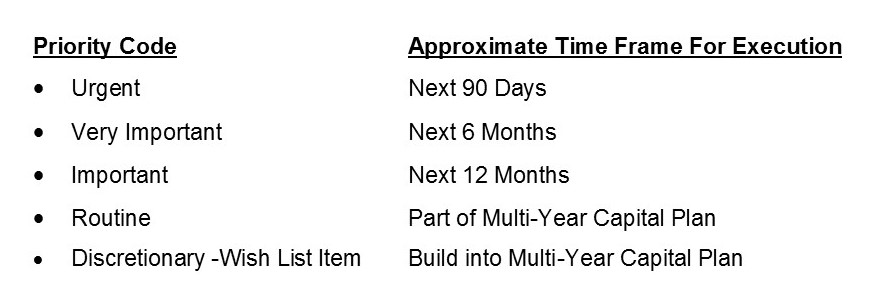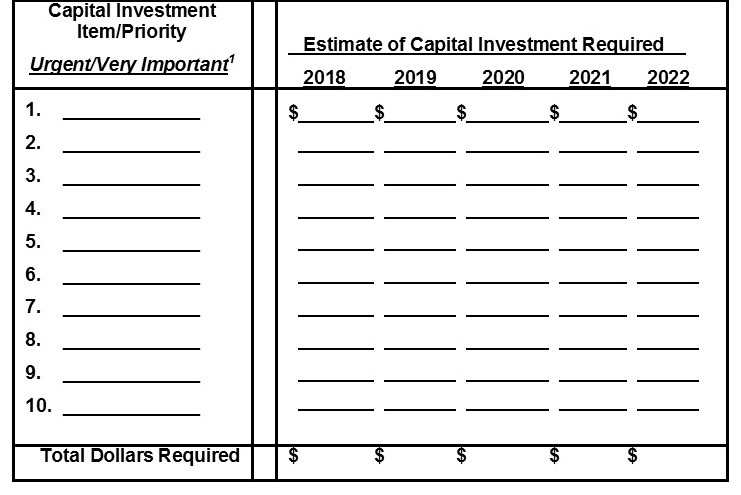What is “Cost Creep”? How is it measured? How does it affect your community, division, or company? What can you do to stay out in front of it? These are some questions I hope to answer for you.
Cost creep, in its basic form, is providing more care to residents than you are being compensated for. This can come about for many reasons, such as:

- an incorrect loaded hourly rate on which to base monthly service fees (MSF) and care tiers upon;
- not having residents assigned to correct care tiers;
- not catching resident’s decline soon enough; and
- caregivers not understanding the dynamic of what they provide the resident and the company through their service.
Use Correct Wage Rates
One of the first steps to stay ahead of cost creep is to make sure that your employee’s loaded wage rates are correct and appropriate. When loading an employee’s wage, you want to include their regular base wage, benefits, overhead, indirect time allotments, and an appropriate profit margin. Once you have accounted for all of these factors you will arrive at the appropriate loaded wage rate on which to base your monthly service fees and tier levels upon.
The base wage is just like it sounds: the face amount at which you pay the employee. If the employee receives any benefits, what is that cost per hour they work? We generally see this in the 25% to 35% of the employee’s base wage. Overhead can be a little more complicated, but think of it in terms of how much do you need from each employee to fund the director of nursing, human resources tasks associated with the employee, funding of Executive Director, meal programs, and so on. MDS generally see this range in the 15% to 25% of the employee’s base wage.
Indirect time is the time a caregiver spends on the clock but not performing hands-on resident care. This could relate to paper work, charts, meetings, breaks, training, and other unrelated tasks. Most time and motion studies have shown that the average caregiver will be productive, i.e. providing hands-on care to a resident, approximately 80% of the time, so this is what MDS generally uses unless an individual case can be made showing more or less. Profit margins will vary depending upon your company’s goals and the level of care provided at your community.
Once you have developed your loaded wage rate for caregivers, about half of the battle is over. Next double check all MSFs and tier ranges at your community to make sure they are in line with the amount of care provided at each level.
Monitor the Care
Now that you have your loaded wage rates and pricing up-to-date, it’s time to monitor the care being provided. Each resident should have a care plan and fall into a category of care, from a base rate (generally the MSF) to a Level 3, 4, 5 depending upon the care levels your community provides. Make sure that ALL residents have an up-to-date care plan and are billed an appropriate amount for their specific care level. Double check time for tasks performed to make sure they are within a reasonable range.
Next we can look at the number of minutes resident care providers are on the floor. First take a quick snap shot of total weekly minutes your staff is providing—don’t initially worry about shifts, just the total number. This is a simple calculation of taking all full-time equivalent (FTE) resident care employees (remember this is FTEs not bodies), multiple that times .80 or 80% efficiency. You can substitute your community’s exact level of efficiency if it is different. Then multiply this number by the hours of a typical shift at your community. This could be 7, 7.5, 8, 12, or something else if your community has a unique schedule. Then multiply by the number of days the typical resident care employee works to reach a normal work week.
To compensate for employees who work different shifts, you either need to calculate separately and add up, or do a weighted average for your community. For example, the equation for a 7.5 hour employee who works 5 days a week at 80% efficiency would look like this: (hours x days) x efficiency factor = hours of direct care provided. Here is our example: (7.5 x 5) x .80 = 30. The (7.5 x 5) = 37.5 represents the hours per day and days per week the employee is on the clock and available to provide care. Then we multiple the 37.5 x .80 or the number of total hours available times the efficiency factor, in this example 80%, to arrive at a net 30 hours of direct care provided by this one particular employee. This should be repeated for each FTE, not warm body, on your schedule each week.
Reconcile the number of minutes of care your residents require verse the number of care minutes you put on the floor each week. It’s important to remember that these two numbers may not be equal due to shift scheduling, shift irregularities, and overlaps, but this is a great place to start making sure that they are in relevant proximity to each other.
Silent Killer
Cost Creep is the silent killer in Senior Living, especially Assisted Living, Memory Care, and Nursing Care. This is a great exercise to run frequently in order to make sure that things don’t quickly get out of hand. This is a problem that will not only affect your Net Operating Income (NOI) and Cash Flow, but also your Terminal Value. If you are shorting yourself $100,000 of NOI per year, that can equate to a $1 million reduction in terminal value for your community.
Here at MDS we have been dealing with the “Cost Creep” phenomenon for many years. Having worked with many Senior Living communities of all shapes and sizes over the years has allowed us to develop an unsurpassed knowledge base and many tools to look at the Cost Creep situation from all sides and develop solutions best suited for our clients. Our experience with this and other industry issues are unsurpassed.
Call me directly at your earliest convenience and let’s discuss how MDS can help your community work through Cost Creep and other operational matters that might be holding up your income statement.
Next Webinar: “How To Recruit Top Talent Into Your Community”
Roy Barker’s next Webinar, “How To Recruit Top Talent Into Your Community,” will be Thursday, August 20 at 1 p.m. Roy will use his 16 years of experience in the Senior Living industry to share unique tips for finding the best talent to manage and care for your residents. Recruiting the best talent means more than simply posting job listings online. Find out how you can be proactive in searching for the top candidates, rather than passively waiting for whoever comes to you. Register for the webinar by clicking this link.
Roy Barker is Director of Special Projects at Moore Diversified Services, a Fort-Worth, Texas-based organization specializing in Senior Living operations analysis, marketing development, and investment advisory services. Roy is an authority in the field of employee turnover analysis and retention strategies.


















